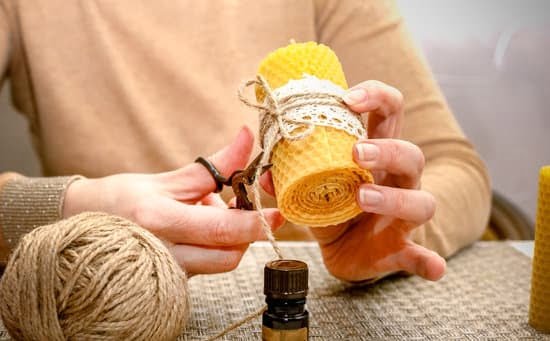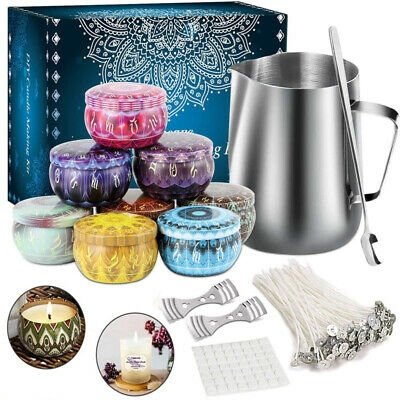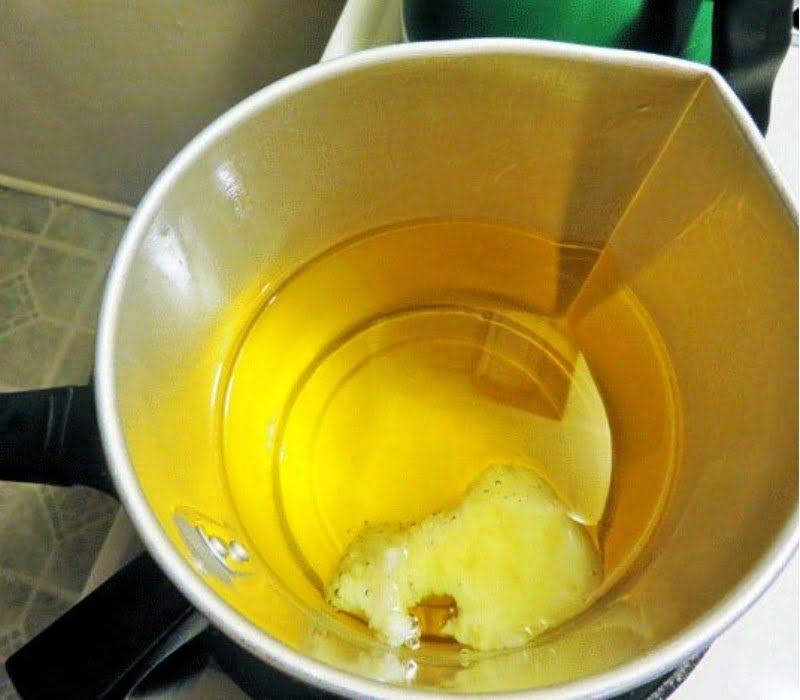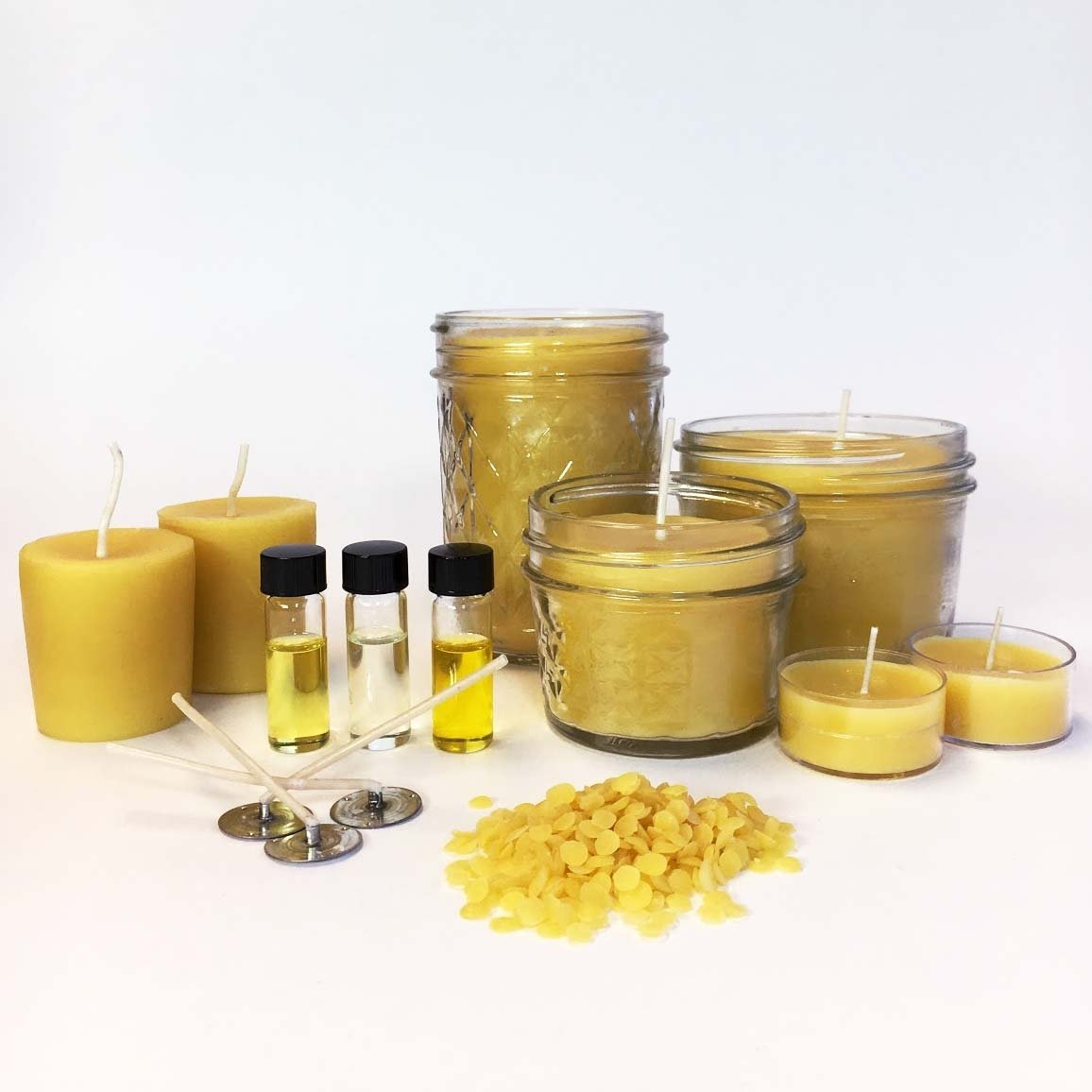The art of candle making is a beautiful and rewarding craft that allows individuals to create their own unique pieces of ambiance and serenity. Handmade candles have a distinct charm and allure that cannot be replicated by store-bought alternatives.
Not only does the process bring immense satisfaction, but it also serves as a source of relaxation and self-expression. To embark on this creative journey, it is essential to gather the necessary candle making supplies that will aid in crafting stunning creations.
When diving into the world of candle making, the first item to consider is the foundation of your candles-the wax. There are several types of waxes available in the market, with soy wax, beeswax, paraffin wax, and gel wax being some of the most popular options. Each type has its pros and cons, which should be carefully considered when selecting the perfect wax for your desired candles.
In addition to wax, another important component in candle making is the wick. The right wick can make all the difference when it comes to igniting that perfect flame. Various types of wicks are available, including cotton, wooden, or pre-waxed options. It is crucial to select an appropriate wick size and style for different candle sizes and types to ensure optimal burn performance.
By gathering these essential candle making supplies – wax and wicks – you can begin your journey into creating handmade candles that not only provide warmth and comfort but also serve as works of art in their own right. Embrace this delightful hobby and uncover the joy it brings by channeling your creativity into crafting exquisite candles tailored specifically to your preferences and aesthetic tastes.
Wax
Candle making is an art that begins with choosing the right wax. The type of wax used plays a significant role in the appearance, quality, and burn time of the candles. Here are some essential types of wax commonly used in candle making:
- Soy Wax: Made from soybean oil, soy wax is a popular choice among candle makers due to its eco-friendly nature. It burns cleanly, has a smooth texture, and holds fragrance well. Soy wax also has excellent scent throw and provides a long-lasting burn.
- Beeswax: Known for its natural honey-like aroma, beeswax is another popular choice for candle making. It creates beautiful and elegant candles with a warm glow when lit. Beeswax candles have a longer burn time compared to other waxes and emit negative ions that purify the air.
- Paraffin Wax: Among the most affordable options, paraffin wax is widely used by beginners and professionals alike. It is easy to work with as it melts quickly and has good scent throw capabilities. However, paraffin wax is derived from petroleum and may not be suitable for those seeking more natural alternatives.
- Gel Wax: Ideal for creating decorative or translucent candles, gel wax offers a unique look unlike other waxes. It has a high clarity that allows for embedding objects like flowers or seashells within the candle. Gel wax does not shrink when cooled, providing stability for embeds.
Choosing the perfect wax depends on factors such as personal preference, desired outcome, and specific project goals. For beginners, it’s recommended to start with soy or beeswax as they are easy to work with and produce high-quality candles.
Once you’ve chosen your preferred type of wax, it’s important to consider quality as well. Look for waxes that are specifically formulated for candle making rather than generic types found in craft stores. High-quality waxes ensure better fragrance retention, longer burn times, and improved overall candle performance.
Wicks
Importance of Wicks
When it comes to candle making, the wick plays a crucial role in igniting and sustaining the flame. A properly chosen wick ensures that your candles burn evenly, minimizes smoking, and enhances scent throw. It is essential to understand the different types of wicks available and their functionalities to achieve optimal results.
Types of Wicks
There are various types of wicks to choose from, each with its own characteristics. Cotton wicks are the most commonly used and work well with most candle types. They are known for offering a clean burn and are suitable for soy wax, beeswax, paraffin wax, and blends.
Wooden wicks have gained popularity for their distinctive crackling sound reminiscent of a fireplace. These wicks provide excellent fragrance release but may require trimming more often than cotton wicks.
Pre-waxed wicks come with a layer of wax already applied, making them convenient for beginners or those who prefer hassle-free candle making. They eliminate the need for priming before use but may require additional trimming during burning.
Each type of wick is available in various sizes to accommodate different candle diameters. It’s important to choose the right size by considering factors such as container diameter, desired burn time, scent load, and type of wax used.
Tips for Choosing the Right Wick
Selecting the appropriate wick size and style can seem daunting at first, but there are some guidelines that can help. Consider using smaller wick sizes for narrower containers and larger sizes for wider ones. For longer burn times or highly scented candles, opt for thicker or multiple-wick options. Testing different wick sizes through sample batches is always recommended to determine the best fit for your specific candle-making project.
For those experimenting with new materials or unconventional containers, purchasing a variety pack containing different wick types and sizes can be a helpful investment. This allows you to test and troubleshoot wicks until you find the most suitable option for your creations. Remember, finding the right wick is crucial to ensure proper burning, performance, and satisfaction with your finished candles.
Fragrance Oils
Fragrance oils play a crucial role in candle making, as they add scent and enhance the overall experience of burning a candle. When choosing fragrance oils for your creations, it is essential to consider factors such as quality, compatibility with wax, and personal preference. This section will delve into the world of fragrance oils and provide tips on selecting and incorporating them into your candles.
One important consideration when shopping for fragrance oils is to ensure that you select high-quality oils specifically formulated for candle making. Look for oils that are designed to have excellent scent throw (the ability to release fragrance when the candle is burned) and are compatible with the type of wax you are using.
Some popular fragrances for candles include lavender, vanilla, citrus, and floral scents like rose or jasmine. However, don’t be afraid to explore unique or niche scents that reflect your personal style or brand if you plan on selling your candles.
When it comes to measuring and incorporating fragrance oils into your candle wax, accuracy is key. Follow the recommended guidelines provided by the manufacturer as different fragrance oils may have varying usage rates. It is crucial not to exceed the recommended usage rate as it can affect the quality and burn of your candle. To measure fragrance oil accurately, consider using a digital scale rather than relying solely on volume measurements.
Incorporating fragrance oils into your wax can be done during different stages of the candle making process. For container candles, it is common to add fragrance oil when the wax has cooled down slightly but is still in liquid form.
Stir gently but thoroughly to ensure even distribution of the scent throughout the wax before pouring it into the containers or molds. On the other hand, for pillar or taper candles made using molds, it may be more effective to apply fragrance oil directly onto the cooled candles once they have been removed from their molds.
By selecting high-quality fragrance oils and understanding how to incorporate them properly into your candle making process, you can create candles that not only look beautiful but also smell amazing when lit. The right fragrance can add a touch of ambiance to any space and make your candles even more enjoyable to burn.
Colorants
When it comes to candle making, colorants are a crucial component for adding vibrance and personality to your creations. Whether you prefer soft pastels or bold, eye-catching hues, the right color can enhance the visual appeal of your candles and set the mood in any space. In this section, we will explore different types of colorants, provide guidance on achieving desired shades and hues, and offer insights on color mixing techniques for creating unique candle designs.
Introducing Different Types of Colorants
There are several options available when it comes to choosing a colorant for your handmade candles. Liquid dyes and color blocks are two popular choices among candle makers. Liquid dyes come in various colors and are easy to use, as they can be directly added to the melted wax. On the other hand, color blocks are solid pigments that need to be shaved or melted before being mixed into the wax.
Natural additives such as herbs, spices, or even flower petals can also be used as colorants for those who prefer a more organic approach to candle making. These natural materials infuse both their aesthetic appeal and their fragrance into the candles.
Achieving Desired Shades and Hues
To achieve desired shades and hues in your candles, it is important to understand how different types of waxes interact with colorants. Some waxes may require more or less dye for achieving specific colors due to their opacity or translucency.
Beginners can start by experimenting with small quantities of wax and gradually increasing the amount of colorant until they achieve their desired shade. Keep in mind that certain fragrances oils may affect the final hue, so it’s important to consider any potential interactions between fragrance oils and chosen colorants.
Color Mixing Techniques for Unique Candle Designs
For those looking to create unique candle designs, exploring color mixing techniques can be an exciting journey. By blending different colorants together, you can create custom shades and gradients that add depth and dimension to your candles.
Some popular color mixing techniques include layering colors, marbling, and dip-dyeing. Layering involves pouring different colored wax in stages to create distinct layers within the candle. Marbling is achieved by swirling different colored waxes together to create a visually striking pattern. Dip-dyeing involves partially immersing the candle into a colored wax to create a gradient effect.
Containers and Molds
Containers and molds are an essential part of the candle making process as they not only serve a functional purpose but also contribute to the overall aesthetic appeal of the finished product. When it comes to selecting containers and molds for your candles, there are various factors to consider, including size, shape, material, and design.
For container candles, glass jars are a popular choice due to their transparency and ability to showcase the color and texture of the wax. Glass jars also allow for easy customization with labels or embellishments. Tins are another option for container candles, offering a more rustic or vintage look.
Ceramic vessels can add elegance and sophistication to your candles, perfect for special occasions or gifts. Silicone molds are versatile and come in various shapes and sizes, allowing you to create unique pillar or shaped candles.
When choosing containers or molds, it’s important to consider the size of your desired candle. The container should be able to accommodate the amount of wax needed while leaving enough space at the top for proper burning. Additionally, consider the shape of your container or mold as it will determine the final appearance of your candle. Flat-bottomed containers are ideal for container candles while tapered molds work well for taper candles.
Each type of container or mold has its advantages and disadvantages. Glass jars provide maximum visibility but can be fragile if dropped or mishandled. Tins may not offer complete visibility but are sturdy and travel-friendly. Ceramic vessels can be beautiful but require careful handling due to their fragility. Silicone molds are flexible and easy to demold but may not have the same level of detail as other types of molds.
It’s important to experiment with different containers and molds to find what works best for you and your desired candle designs. Don’t hesitate to try out different shapes, sizes, materials, and styles to create unique creations that reflect your personal style.
By carefully selecting containers and molds that align with your vision, you’ll be setting the stage for creating beautiful candles that not only provide a warm glow but also serve as decorative pieces in any space.
Tools and Equipment
Candle making is a creative and enjoyable hobby that allows individuals to make beautiful handmade candles. While the process itself is fun, having the right tools and equipment can simplify the candle making process and ensure successful results. In this section, we will explore the essential tools needed for candle making and provide suggestions for more advanced candle makers.
1. Double Boiler: A double boiler is an important tool when it comes to melting wax. It helps to prevent scorching or overheating the wax by providing indirect heat. A double boiler consists of two pots, with one fitting inside the other. The larger pot is filled with water, while the smaller pot holds the wax. As the water in the larger pot heats up, it gradually melts the wax in the smaller pot.
2. Thermometer: A thermometer is crucial for candle making as it helps to ensure that your wax reaches the correct temperature before pouring into molds or containers. Different types of waxes have different melting points, so it’s important to monitor and maintain the appropriate temperature throughout the process for optimal results.
3. Pouring Pitcher: A pouring pitcher or jug is a practical tool that makes it easier to pour melted wax into molds or containers without causing spills or messes. Look for a heat-resistant pitcher with a spout that allows for precise pouring.
4. Heat Gun: A heat gun can be a useful tool for more advanced candle makers who want to create unique designs on their candles. It can be used to melt and manipulate layers of colored wax or create interesting textures on the surface of candles.
For those who are just starting out in candle making, these essential tools will greatly simplify and enhance your experience. However, as you become more experienced and develop your techniques, you may find that additional tools such as molds, fragrance testing strips, wick holders, or even a digital scale become helpful additions to your toolkit.
Remember to always prioritize safety while using these tools and equipment. Follow the manufacturer’s instructions, wear appropriate protective gear such as gloves and safety goggles, and exercise caution when handling hot wax. With the right tools and a passion for creativity, you can simplify the candle making process and enjoy crafting beautiful candles.
Safety Precautions
When engaging in the art of candle making, it is essential to prioritize safety to ensure an incident-free experience. Handling hot wax and working with open flames present potential hazards, but with the right precautions, accidents can be avoided. This section will highlight the importance of safety measures during candle making and provide readers with a checklist of necessary precautions to follow.
First and foremost, proper ventilation is crucial when working with materials that release fumes, such as fragrance oils or certain types of wax. Adequate airflow helps dissipate any potentially harmful vapors and prevents their accumulation in the workspace. It is recommended to work in a well-ventilated area or have some source of ventilation nearby, like an open window or a fan.
Additionally, fire prevention should be at the forefront of every candle maker’s mind. Never leave a lit candle unattended and keep flammable objects away from the flame. It is wise to have a fire extinguisher readily available in case of emergencies. It is also important to remember that while candles are beautiful sources of light and ambiance, they can pose a fire hazard if not handled responsibly.
| Safety Precaution | Description |
|---|---|
| Proper Ventilation | Ensure there is adequate airflow in your workspace to prevent fume accumulation. |
| Fire Prevention | Never leave lit candles unattended and keep flammable objects away from the flame. |
| Protective Clothing | Wear long sleeves, gloves, and protective eyewear to safeguard against hot wax splatters. |
| Hot Wax Handling | Exercise caution when handling hot wax and use heat-resistant tools or equipment. |
| Clean Workspace | Maintain a clutter-free workspace to minimize the risk of accidents or spills. |
By adhering to these safety precautions, candle makers can ensure a safe and incident-free candle making experience. Remember, safety is paramount in enjoying this creative and fulfilling hobby.
Conclusion
In conclusion, candle making is an enchanting and fulfilling craft that allows you to create beautiful handmade candles. Throughout this article, we have explored the essential candle making supplies needed to embark on your own candle making journey.
From selecting the perfect wax to igniting the flame with the right wick, scenting your creations with fragrance oils, adding vibrance with colorants, choosing containers and molds to set the stage, using the necessary tools and equipment, and prioritizing safety precautions – every aspect has been covered to ensure a successful and enjoyable experience.
By now, you should feel equipped with the knowledge and confidence to dive into candle making. The possibilities are endless as you unleash your creativity and passion for this rewarding hobby. Whether you want to make candles as gifts for loved ones or simply enjoy the therapeutic process of crafting them yourself, there is no better time than now to light up your candle making journey.
So gather your supplies, set aside some time for yourself or gather friends for a candle making party, and let your imagination soar. With each flickering flame bringing warmth and ambiance into any space, you’ll find immense satisfaction in knowing that these creations were made by your own hands. Embrace the beauty and art of candle making – it’s time to illuminate the world with your unique designs.

Welcome to my candle making blog! In this blog, I will be sharing my tips and tricks for making candles. I will also be sharing some of my favorite recipes.





